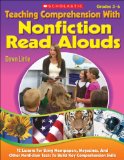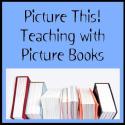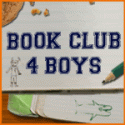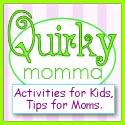
Created by Susan Stephenson of The Book Chook
A few weeks ago I read a column in the Washington Post by Jay Matthews. He lamented about how restrictive reading lists are for middle and high school students and how they haven’t really changed from when he was in high school, in other words there is very little nonfiction on the reading lists! Mathews stated, “Educators say non-fiction is more difficult than fiction for students to comprehend. It requires more factual knowledge, beyond fiction’s simple truths of love, hate, passion and remorse. So we have a pathetic cycle. Students don’t know enough about the real world because they don’t read non-fiction and they can’t read non-fiction because they don’t know enough about the real world.”
As an educator, I have heard colleagues say how non-fiction is more difficult than fiction for students to comprehend, as Mr. Matthews stated. My answer always was, “We need to teach them how to read nonfiction. We need to expose students to the joys of reading nonfiction.” After all, that’s our job as educators, isn’t it? But, it’s not just an educator’s job. Our children actually spend way more time outside of school than in school, so really, teaching our children falls on us as parents as well.
In my opinion, it’s never too early to introduce nonfiction texts into our children’s lives. Perhaps if we begin immersing our children in nonfiction as preschoolers (when they have a natural curiosity for the world around them and they are full of energy for learning!), they will grow up with a natural love for learning and passion for reading. And really, the earlier we introduce nonfiction into our children’s lives the easier it becomes for them to understand how to read it. Maybe we can begin to break the “pathetic cycle” and create a generation of readers who enjoy nonfiction!
So here I have for you just a few ways you can integrate nonfiction into your preschooler’s life:
- Read Aloud Nonfiction Texts – Anytime your preschooler shows an interest in a particular topic, provide nonfiction books on that topic. When you read informational texts aloud to your child (and you don’t have to read nonfiction from cover to cover!), you are building his/her background knowledge.
- Expose Your Child to Real World Nonfiction Print – Provide real-world nonfiction text for pretend play. For example, if your child is pretending to be a waiter or work in a restaurant, have some take-out menus on hand for him to use. If your child is playing post office, provide him with some junk mail to sort. This can easily turn into a math activity as well. Kids can sort the mail by color or size. When your child turns your family room into a waiting room at the doctor or dentist office, provide magazines and newspapers for him.

- Introduce Text Features If your child has a particular question about a topic, use that opportunity to discuss and show your child a few text features of nonfiction texts. Perhaps he wants to know what a specific dinosaur eats; demonstrate how you can use the table of contents or the index to try to locate the answer quickly, rather than reading through the whole book. If you come upon a word that you know your child will have difficulty understanding, demonstrate how to use a glossary. If there isn’t a glossary, explain to your child what the word means. Briefly, explain how we read differently for different purposes.
- Provide Hands-on Experiences A combination of texts and real-life or hands-on experiences is most powerful for learning. You can use this three-step process to incorporate nonfiction texts into your preschooler’s reading repertoire. Through these steps you will build your child’s background knowledge (essential to comprehending texts):
- Select a text based on a topic that interests your child.
- Hands-On/Read World – Prior to reading, provide an opportunity for your child to have a hands-on experience of some sort related to the topic. Utilize the outside world as much as possible (outdoors in general, museums, special exhibits, etc.)
- Read Aloud -Read aloud the text asking questions as you read. Provide explanations if you believe your child’s comprehension may be breaking down.
- Connect – Draw comparisons between the experience the child had and the text. How are they alike? How are they different? Help your child make connections.
Reading nonfiction texts with preschoolers provides a natural connection to their own curiosities about the world. Having background knowledge about topics helps children comprehend what they read. By building upon the world knowledge of your preschooler now, you are setting a foundation that will only serve to guide them when they begin reading on their own.
What if we begin with our youngest learners? What are other ways we can introduce nonfiction into the lives of preschoolers?
Parts of this post were originally written as a guest post on No Time For Flash Cards in August 2009
Please note that this post is part of the Share a Story-Shape a Future Literacy Blog Tour, which is being hosted at The Reading Zone today with the topic, Just the Facts: The Nonfiction Book Hook. Thank you for stopping by! I hope you visit again soon!
©2010 by Dawn Little for Literacy Toolbox. All Rights Reserved. All Amazon links are affiliate links and may result in my receiving a small commission. This is at no additional cost to you.
Henry’s Freedom Box (Caldecott Honor Book)













